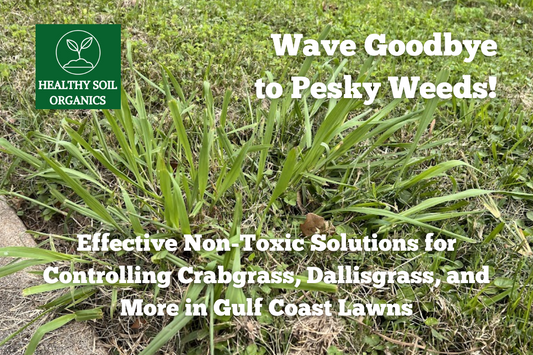Hello Green Thumbs, HealthySoilOrganics.com is back with more awesome organic lawn and landscape solutions for you! Today, we are going to talk about those tiny, uninvited guests, fleas and ticks. These little rascals can really turn your lush green paradise into a nuisance, not just for you but for your beloved pets as well. But don’t worry, we've got you covered with five eco-friendly, simple household methods to tackle these insects effectively.
But before we jump in, let's briefly understand the life cycle of these pests. A bit of enemy reconnaissance never hurt, right?
Understanding The Flea And Tick Life Cycle
Both fleas and ticks have four stages in their life cycle: egg, larva, pupa (only in the case of fleas), and adult. The entire cycle for fleas can take anywhere from a couple weeks to several months, depending on environmental conditions, whereas ticks can live up to three years! Understanding these cycles can help us plan our counter-attack effectively.
1. Good Old-Fashioned Cleaning:
An often underappreciated method of controlling fleas and ticks is regular cleaning. Vacuum your home often, focusing especially on dark, warm areas as these are ideal breeding grounds for fleas. In the garden, rake up any leaves or debris, and keep your lawn mowed regularly. This disrupts the fleas' and ticks' life cycle, reducing their population in your yard.
2. Utilize Beneficial Nematodes:
Mother Nature always has the best solutions! Nematodes are microscopic, non-segmented roundworms that can be a flea's worst nightmare. Certain varieties of these worms feed on flea larvae, effectively controlling their population. Just mix the nematodes with water and spray on affected areas. Best of all, they are completely harmless to humans, pets, and beneficial insects.
3. Create a Tick-Free Zone:
Ticks love tall grass and shrubbery. You can create a tick-free zone in your yard by keeping your lawn short, removing any tall weeds and creating a barrier of wood chips or gravel between wooded areas and your lawn. This prevents ticks from migrating into your yard.
4. Diatomaceous Earth (DE) to the Rescue:
Food-grade DE is an excellent natural pesticide. It's made from fossilized remains of tiny aquatic organisms called diatoms. The fine powder absorbs lipids from the waxy outer layer of insects' exoskeletons, causing them to dehydrate and die. Sprinkle DE around your yard, but remember to wear a mask, as it can be irritating if inhaled.
5. Plant Flea and Tick Repelling Plants:
Certain plants naturally repel fleas and ticks. Planting them around your yard can be a great preventative measure. Consider plants like lavender, mint, and lemongrass. They not only repel pests but also add beauty and aroma to your landscape.
Remember, organic pest control is not a one-and-done solution. It requires persistence and consistency. But the benefits of a healthy, pesticide-free yard are worth the effort. Not just for us, but for our beloved pets, beneficial insects, and the environment as well.
We hope these methods will help you reclaim your backyard from these pesky invaders. Let's pledge to keep our lawns healthy and organic!
Here's wishing you all the greenest of thumbs. Keep gardening, keep growing, and as always, let's keep our Earth healthy and happy together!
Stay tuned to HealthySoilOrganics.com for more organic lawn and landscape solutions. Happy gardening, friends!




